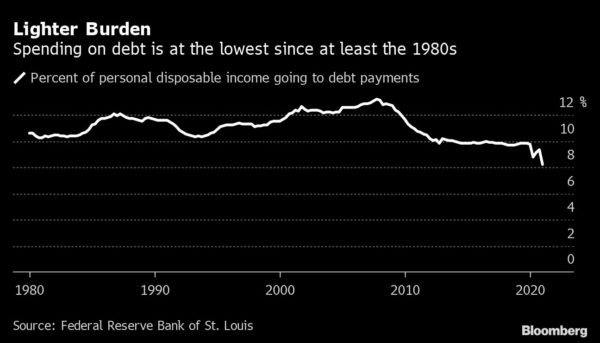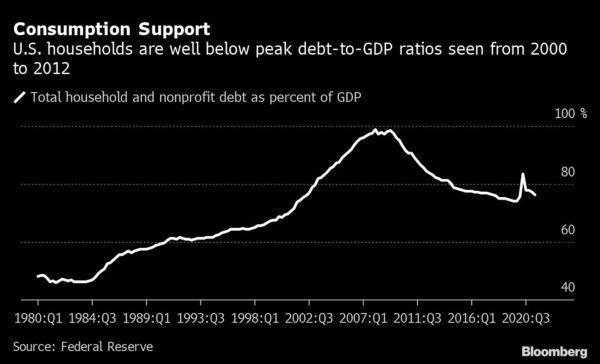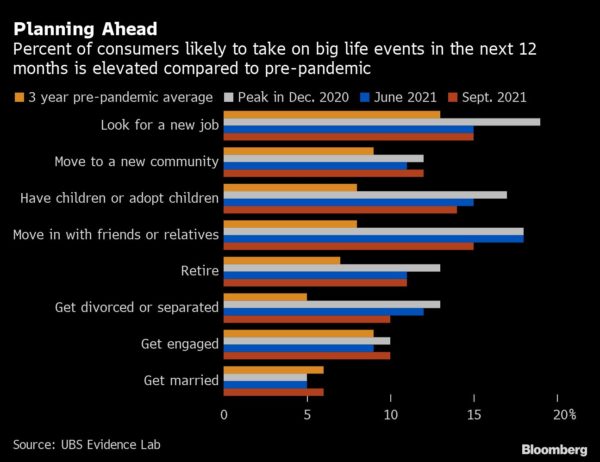By Jill R Shah
U.S. household balance sheets are in their best shape in years, giving Americans greater capacity to propel consumer spending and, in some cases, to make life-altering decisions.
Across a number of measures, consumers are flush. Their debt-servicing costs have tumbled as a share of after-tax income and swelling wealth has made their liabilities shrink in relative terms. Economic growth has outpaced total household debt.

“From a credit perspective, the consumer is the best we’ve seen in decades,” said Matthew Mish, a credit strategist at UBS Group AG.
Federal stimulus payments and social support programs have helped bolster American finances, and as suspension periods for rent and student debt run out, the metrics may lose some of their strength. Even so, with interest rates remaining low and a cushion of extra savings, households are expected to have financial wherewithal typically lacking in the wake of a recession.
That helps explain why more American consumers are planning big life decisions — such as moving locations, buying a house or having a baby — than they were prior to Covid-19, according to data compiled by the UBS Research Lab. These plans translate to a willingness to spend, Mish said. They also underscore economists’ forecasts for economic growth in 2022 and 2023 that outpace the pre-pandemic trend.
Here are four charts that break it down:

Households are spending less of their disposable income — that is, after taxes — on debt. The debt-to-income ratio is the lowest since at least the 1980s, as far back as a Federal Reserve series goes.

Financial and other household assets — think stock portfolios and home values — have climbed during the economic recovery from the pandemic. That’s reduced the aggregate liability-to-asset ratio, making Americans feel better off. At the same time, this deleveraging has been led by higher-income cohorts, UBS analysts noted in a report released recently.

Consumer debt as a percentage of gross domestic product is now well below the latest peak and back to levels seen on average in the early 2000s.

With household balances as strong as they are, more Americans say they are extremely or somewhat likely to take on big life events in the next 12 months than they did before the pandemic, according to a survey by UBS. Such intentions among middle-age actors generally spur borrowing and consumption, said Mish.
“The post-Covid environment has created a lot of dynamism, at least in terms of consumer intentions,” he said in an interview.
More stories like this are available on bloomberg.com.




